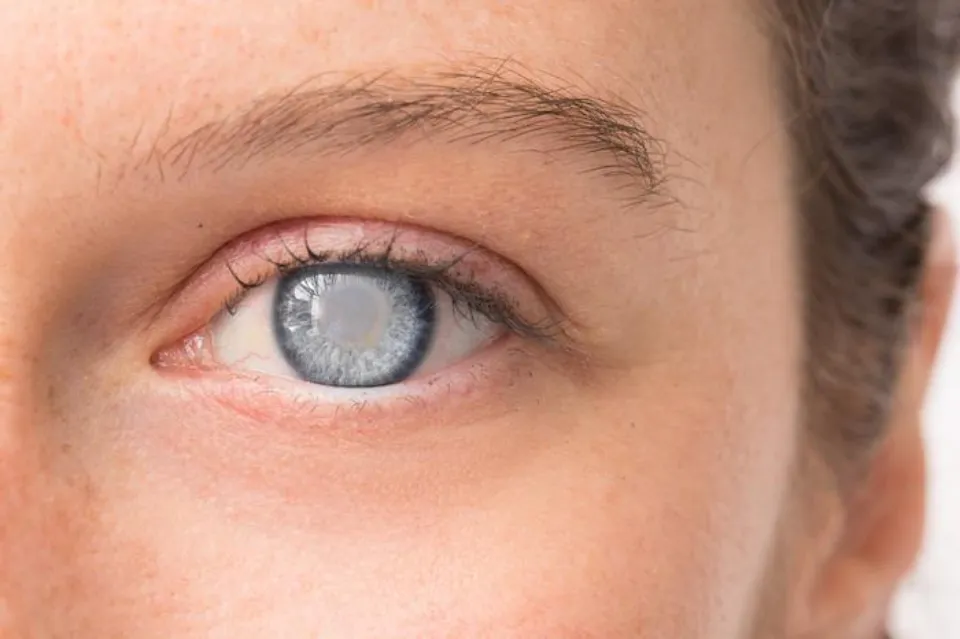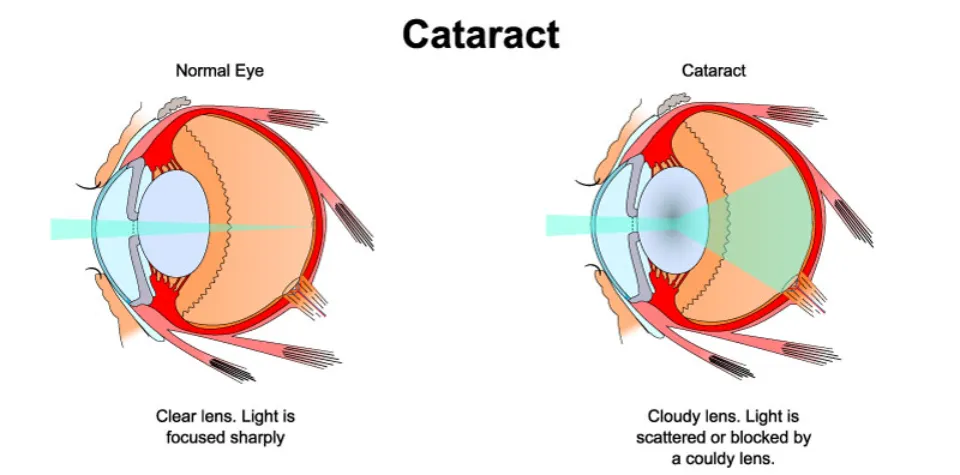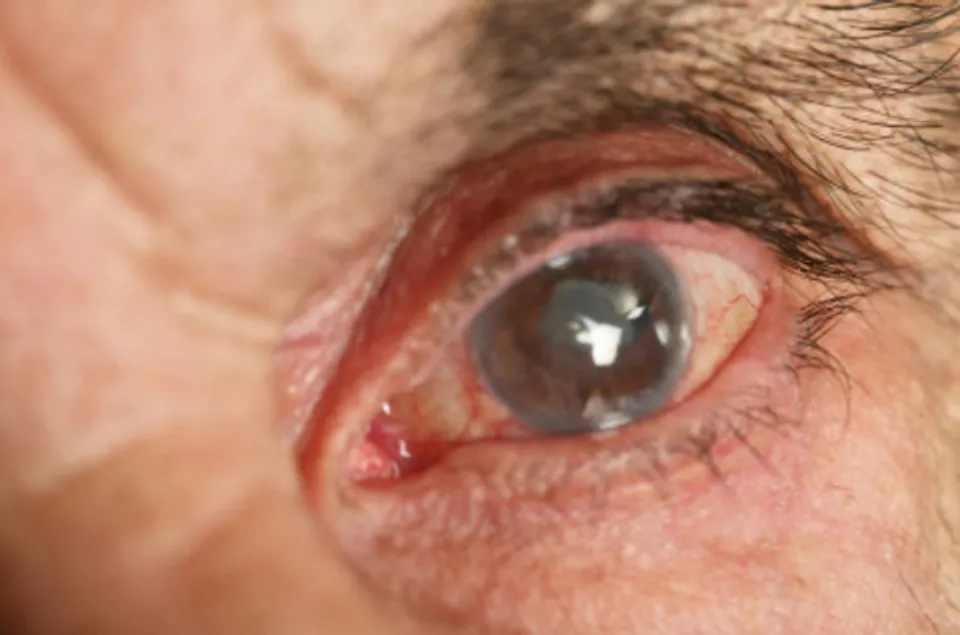The most common cause of cataracts is the aging of the eye, so if you’re approaching 40 you might want to start thinking about cataracts. Cataracts are a type of eye condition that impairs vision and deteriorates over time.
Throughout your lifetime, cataracts will likely develop as a result of getting older. You will eventually have it, even if it doesn’t progress to the point where surgery is necessary. The most frequent condition of the eyes associated with aging and the main factor in avoidable blindness is cataracts. Currently, cataracts affect more than 24.4 million Americans over the age of 40. What can be done about cataracts given their prevalence? You can find out the answer in this blog post.
What Are Cataracts?
If you have a cataract, it means that the normally clear lens in your eye is “foggy”. Your eyes may appear cloudy if you have cataracts in either one or both of your eyes. While less frequent, white shapes or streaks in the eyes are possible.
Your eye can’t focus as it should when a cataract covers the lens, which causes blurry vision or vision loss. Depending on the location, severity, and type of the cataract, you might experience varying degrees of blurriness or vision loss.

Types
There are numerous different types of cataracts that can develop in one or both eyes and affect vision in a mild to severe way. These include:
- Nuclear cataracts are the most common form of cataracts which are formed in the center of the eye’s lens
- Cortical cataracts usually begin as white “streaks” forming near the edge of the lens and grow toward its center
- Congenital cataracts present at birth and can occur in a variety of configurations
- Trauma-induced cataracts can form anywhere on the lens and often develop into a “flower-petal” shape
- Posterior subcapsular cataracts develop at the back surface of the lens unlike other forms of cataracts. These types of cataracts tend to develop faster than the others
Causes
Most cataracts are brought on by the normal aging-related changes to your eyes. A cloudy area on your lens can develop as a result of the proteins in your eye breaking down with age. This is the cataract.
Depending on the type of cataract you have, there are a number of factors besides age that can contribute to cataracts. Additional causes of cataracts may include:
- Diabetes
- Eye injury, infection, or trauma
- Radiation
- Eye surgery
- Genetics
- Excessive exposure to sunlight
- Smoking or drinking excessive amounts of alcohol
- Obesity
- High blood pressure
- Prolonged use of corticosteroid medications
Does Everyone Get Cataracts?
So let’s get right to the point: technically, given enough time, everyone does develop cataracts. Despite this, not everyone experiences the development of them over the course of their lives because each person’s rate of development differs. But a lot of people do, and the National Eye Institute reports that more than half of Americans over 80 either have cataracts or have had cataract surgery.
Cataracts are an eye condition that typically worsens with age. The crystalline lens of your eye becomes more rigid with age as a result of proteins in the lens beginning to clump and break apart. Your crystalline lens starts to look milky, hazy, and foggy during this process, which also impairs your vision.
Therefore, the simplest response is: You have a high likelihood of developing cataracts. Cataracts are very typical.
Preventing, Managing, & Treating Cataracts
Older adults frequently develop cataracts, but there are a number of different methods you can employ to help maintain the quality of your vision as you age.
Of course, for advice specific to your needs, we always advise speaking with our eye care team. With the aid of a thorough eye exam, we can identify any factors that may be causing your cataract development and develop a customized treatment or management strategy. Some of the most common strategies we may recommend include:
Keep a Healthy Lifestyle
Choosing a healthy lifestyle can significantly reduce your risk of developing cataracts. Some of our most common tips include:
- annual eye exam.
- Sunglasses with UV protection, whether they are non-prescription or prescription, should be worn when outside.
- lowering your alcohol and tobacco intake.
- consuming nutrients, such as zinc, lutein, and zeaxanthin that are good for the eyes.

Cataract Surgery
Cataract surgery is the only option for treatment. In order to help you achieve clear vision, this procedure removes your eye’s cataract lens and replaces it with a synthetic intraocular lens.
We must examine your eyes and determine whether you qualify for this procedure before we can recommend it. Our doctors and staff will help you through the procedure step by step if you can have the surgery safely in order to ensure the best visual results and most enjoyable experience.
Updating Your Lens Prescription
To see as clearly as you can while dealing with cataracts, if your symptoms are mild, updating your lens prescription might be sufficient. Specialty lenses or even contact lenses might be advised in some circumstances.
Conclusion
Cataracts are common in older adults, but over time, they can have a serious impact on your vision. Cataracts may occasionally result in blindness and have an impact on your quality of life. Contact your doctor if you’re worried about how cataracts might affect your vision as you age in order to help maintain your sight.
FAQs
What Percentage of Population Gets Cataracts?
You might find it surprising, but women are more likely than men to develop cataracts. The NEI numbers show that 19.67 percent of women experience cataracts, while 14.26 percent of all men experience cataracts.
How Common is Cataract in America?
Cataracts affect more than 24.4 million Americans age 40 and older. By the age of 75, cataracts affect about half of all Americans.



